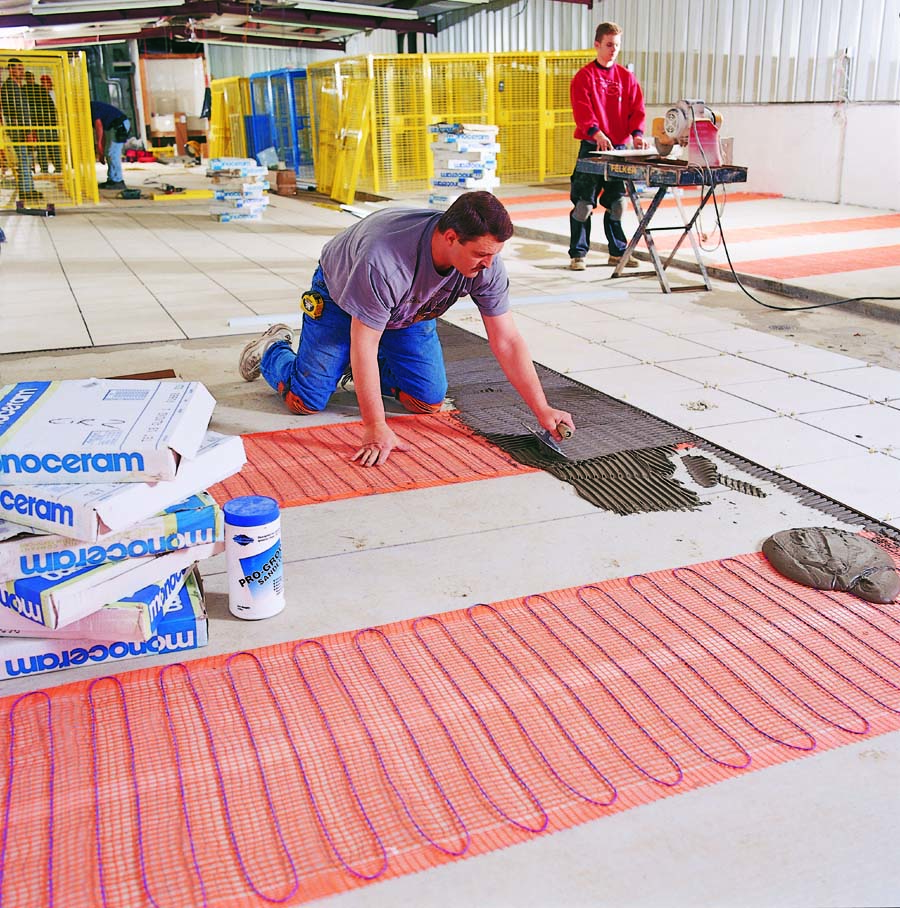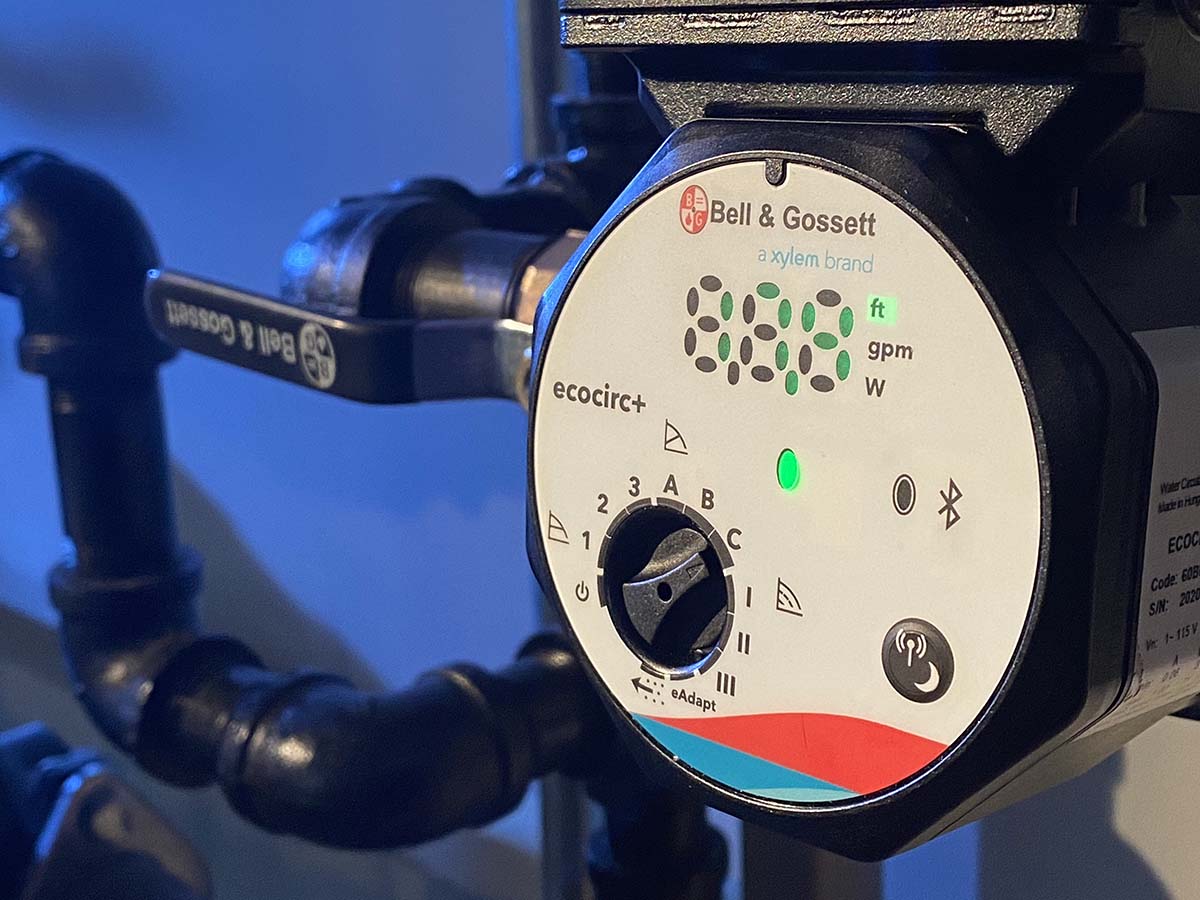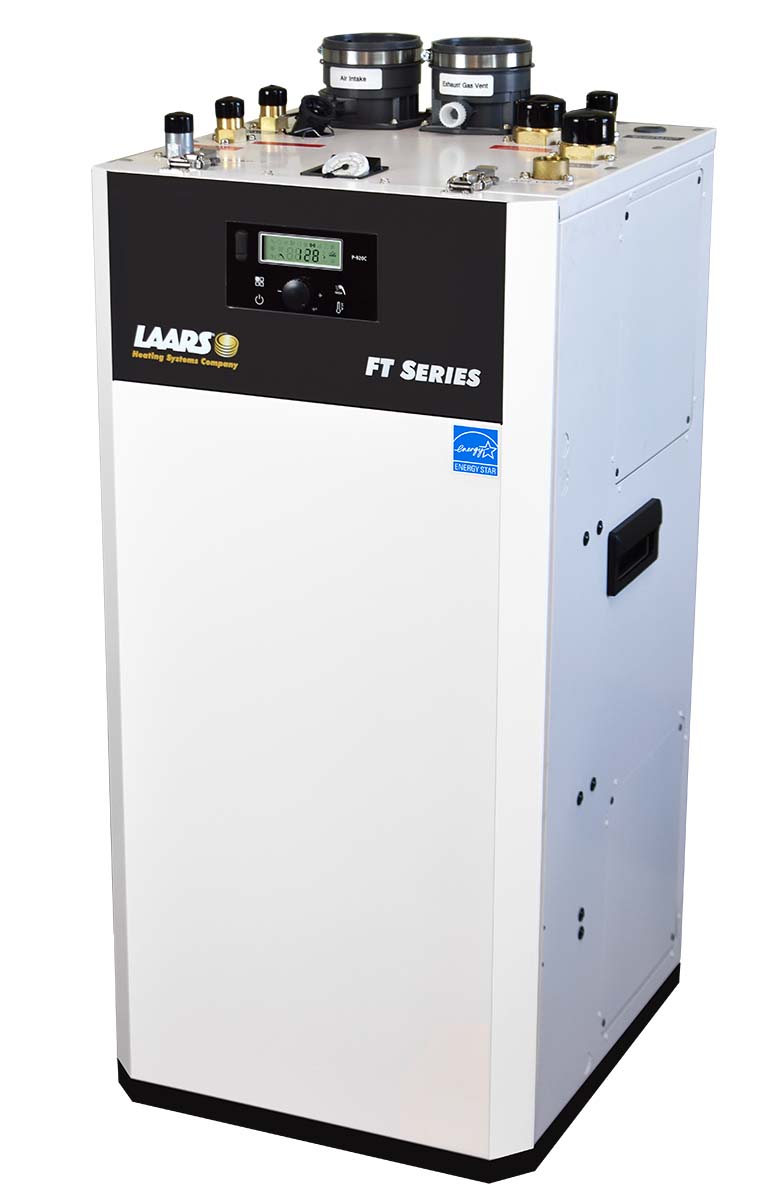Radiant heating systems provide warmth to a home or building’s floor or to panels in (or behind) walls or ceilings. These systems generally transfer heat from large surfaces or elements to occupants through infrared radiation.
Radiant heating systems generally come in three options: air-source, electric, and hydronic, each offering its own unique benefits and niche uses. This article will examine those benefits and explore the uses of each through the eyes of those who design and manufacture the systems.
Electric Radiant Heat
Electric radiant floor systems typically consist of electric heating cables built into the floor. Electrical matting may also be mounted on the subfloor or below floor covering.
The primary advantages of electric radiant systems are their lower installation costs and overall simplicity.
“There is no need for a boiler/water heater nor the controls that are necessary with hydronic systems,” said Josef Marcum, piping system engineer, Viega. “Electric systems are great for small residences or camps that need to be winterized.”
Electric systems are simple to design and install, said Kolyn Marshall, systems engineering manager, Watts.
“There are no additional mechanical requirements, so everything is self-contained within the space that’s involved,” he said. “These systems are designed to go directly in thinset under tile, making them ideal for kitchen and bathroom renovations.”
An electric radiant retrofit can be performed without reworking the entire mechanical system, which is another advantage for contractors, said Max Rohr, director of education and technical marketing, Caleffi North America.
“In a house with a furnace for space heating, the comfort of a radiant system may be as easy as running a wire to a master bath and adding a tiny bit of height below the tile,” he said. “If you are looking to add warm floors to a few key zones, electric makes sense.”
Hydronic Radiant Heat

LOWER COSTS: The primary advantages of electric radiant systems are their lower installation costs and overall simplicity. (Courtesy of Watts)
Hydronic equipment offers several advantages, including even, efficient heating through the circulation of hot or warm water in tubing embedded in floors and walls.
According to Barry Lee, product manager, Xylem Inc., modern systems, often equipped with ECM [electronically commutated motor] circulators, allow for precise temperature control by adjusting water flow rates, ensuring comfort and energy efficiency.
“These systems are also easy to install in new construction projects, where the tubing can be installed before construction is complete,” he said.
Hydronic systems operate quietly and efficiently, evenly distributing heated water throughout a large surface area.
“This form of heat radiates into the air and is gently circulated by convection throughout the room,” said Chuck O’Donnell, director of marketing, Laars Heating Systems. “Radiant systems also continue to radiate some heat even after a room’s air has come to temperature. This results in a continuous feeling of warmth in homes with radiant heat.”
In projects with multiple zones, hydronic radiant heat systems allow users to maintain unique set points in each room.
“Another added benefit of hydronic radiant systems is that they are closed systems without the use of air ducts, meaning that allergens, dust, and other particles are not blown throughout the home,” O’Donnell said.
Most hydronic radiant systems are used with fossil fuel boilers that are also used to operate high-temperature heat emitters (140°-180°F), such as baseboard radiation, air handler coils, and domestic hot water tanks. With the U.S.’s commitment to lowering dependency on fossil fuels, radiant heating has emerged as a logical solution.
“Hydronic radiant heating has lower operating temperatures of 90°-130° and pairs very well with modern-day water-to-air or water-to-water heat pumps, as their maximum supply water temperature is about 130°,” said Marcum.
New Products
Driven by regulations from the U.S. Department of Energy (DOE) and other regulatory authorities, energy efficiency and sustainability are highly sought after traits. Many new radiant products demonstrate these characteristics via the Hydraulic Institute’s Energy Rating standards.
Bell & Gossett’s ecocirc 20-18/ecocirc+ 20-18 – Variable Speed ECM Smart Circulator is one of them. The ecocirc 20-18 is a variable-speed ECM circulator available for hydronic heating and cooling systems as well as potable water systems.

VARIABLE-SPEED VERSATILITY: Bell & Gossett’s variable-speed ecocirc® 20-18 ECM smart circulator can replace as many as 70 different pumps on the market today.
“These pumps specifically meet the growing trend toward energy efficient and adaptable smart circulator pumps,” said Lee. “It features a maximum shutoff head of 20 feet, or a maximum flow of 18 gpm, making it suitable for most residential systems. Both standard and plus versions of the product use a maximum of 71 W, just above a traditional 60-W lightbulb.”
Watts’ SunTouch Connect Plus allows installers, business owners, or homeowners to remotely access and control electric floor heating systems. The thermostat can be connected to a home or facility Wi-Fi system — as well as voice controls, such Alexa or Hey Google — and boasts features, such as automatic clock setting, current outdoor temperature, weather compensation, and warm weather shut down.
“The ConnectPlus thermostat looks great on any wall, as it features a thin, sleek profile and modern design,” said Marshall. “Other features include energy usage monitoring, email/text notifications, landscape and vertical mounting, away terminal features, 915-MHz technology for wireless connectivity to optional equipment, second-stage heat output, and more.”
Caleffi’s Dirtmag Pro is a dual magnet dirt separator with an internal magnet in drywell. It’s designed to keep equipment running at peak efficiency throughout its entire service life.
“Nobody wins if heat exchangers fill with system debris that could have been captured and removed from the system,” said Rohr.

COMBI BOILER: Laars’ FT Series Floor Standing Condensing Boiler is available as a 199-MBH space heating boiler or as a combination boiler and water heater for natural gas or propane applications. (Courtesy of Laars)
Laars’ FT Series Floor Standing Condensing Boiler is available as a 199-MBH space heating boiler or as a combination boiler and water heater for natural gas or propane applications. Features include built-in low loss header for ease of installation; robust, stainless-steel, fire-tube heat exchanger; top piping connections for flexible installation; and large front access for service and maintenance.
“This combi boiler model can deliver 6 gallons per minute of hot water in the first minute and 5.2 gallons per minute continuous delivery at a 70°F temperature rise,” said O’Donnell. “The FT Series floor boiler can simultaneously supply home heating and domestic hot water without interruption, making it ideal to supply both hydronic radiant heat and domestic hot water to homeowners.”
Viega’s ProPress Manual Balancing Valve features an adjustable handle with an integral scale visible on the side used to increase or decrease the flow rate.
“The two pressure-test ports are used to measure the differential pressure across the seat of the valve, which can be used to calculate the flow rate,” said Marcum. “The ProPress Balancing Valve is suitable for commercial applications, including potable and hydronic systems, and is available in ½- to 2-inch sizes.”
Conclusion
When considering radiant heating options, it’s easy to fall into an either-or perspective. A lot of installers and homeowners are learning that utilizing both hydronics and electric sources may provide the best of both worlds.
“One option is to install hydronic heating in the entire house and electric [in addition to the hydronic system] in the bathrooms and kitchen,” said Marshall. “This allows for comfort year-round. Running a hydronic system for small areas is costly and inefficient. So for those mornings in the spring or summer, it’s often more effective to turn on the electric portion for spot warming rather than run the hydronics.”
Regardless of the heating source, HVAC contractors and end users should consider radiant heating systems as more than niche solutions.
“Radiant heating is a best-case scenario for the U.S. as it navigates its way through modern-day energy transition,” said Rohr. “Whether you are moving to heat pumps or sticking with condensing boilers, the large surface area of radiant systems allows contractors to design with the best efficiencies and deliver energy efficiency without sacrificing comfort.” said Rohr.



Report Abusive Comment